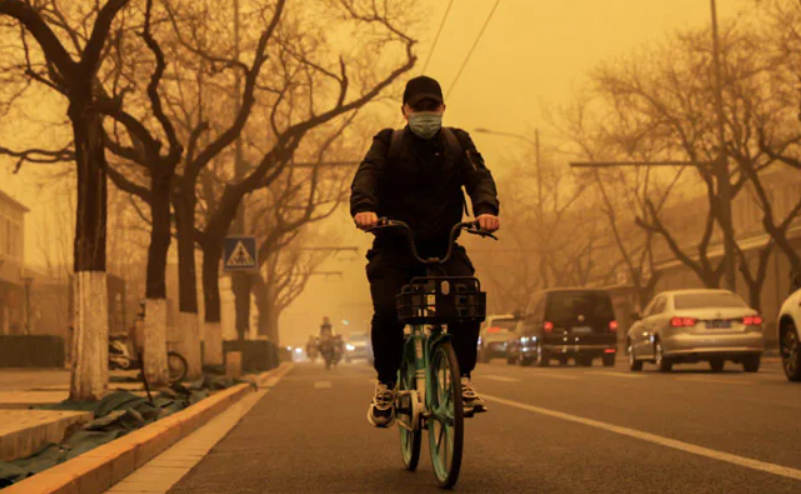BEIJING– On Monday morning, the Chinese capital Beijing was clothed in a thick yellowish-brown dust due to heavy winds blowing in from Inner Mongolia and other parts of northwestern China. It has been considered one of the worst sandstorms in years.
A yellow alert was declared on Monday morning, by the China meteorological administration. It says that the sandstorms had spread from Inner Mongolia into the provinces of Shanxi, Gansu, and Hebei, which encompass Beijing.
During this week, the capital’s official air quality index reached a maximum level of 500, and with floating particles known as PM10 reaching 2,000 microorganisms per cubic meter in some districts. Environment changes, degradation, pollution, and so on are currently the major areas of concern. Due to the increasing level of pollutants in the air, cosmopolitan cities around the world are suffering from poor AQI, resulting in health problems and even worse. And in China, sand in the air makes it tough to breathe.
Sources say, readings of PM2.5, smaller particles that infiltrate the lungs, also approaching 300 micrograms per cubic meter, is something far higher than China’s standard 35 micrograms. That’s what is making the situation worse for the folks and citizens living out there. The daily morning caused tensions among people and disturned a bit of their regular routine.
Every year, Beijing faces regular sandstorms between March and April as a result of its proximity to the massive Gobi Desert as well as due to deforestation throughout northern China, the sandstorms that occur in china are fueled by growing means of degradation of forests.
Environmental preservation is needed, and a must. It’s high time to act before it will be late. It’s been recorded that Beijing and surrounding regions have been suffering from relatively high levels of pollution in recent weeks, with the city also swathed in smog during the opening of parliament, specifically starting on March 5.




